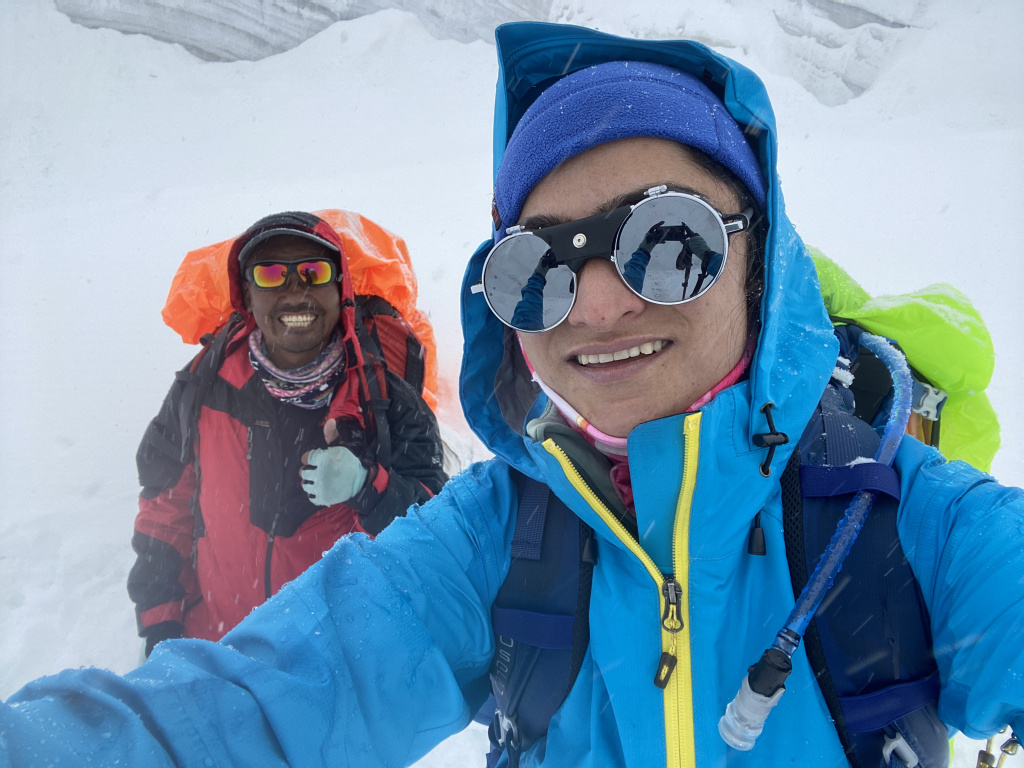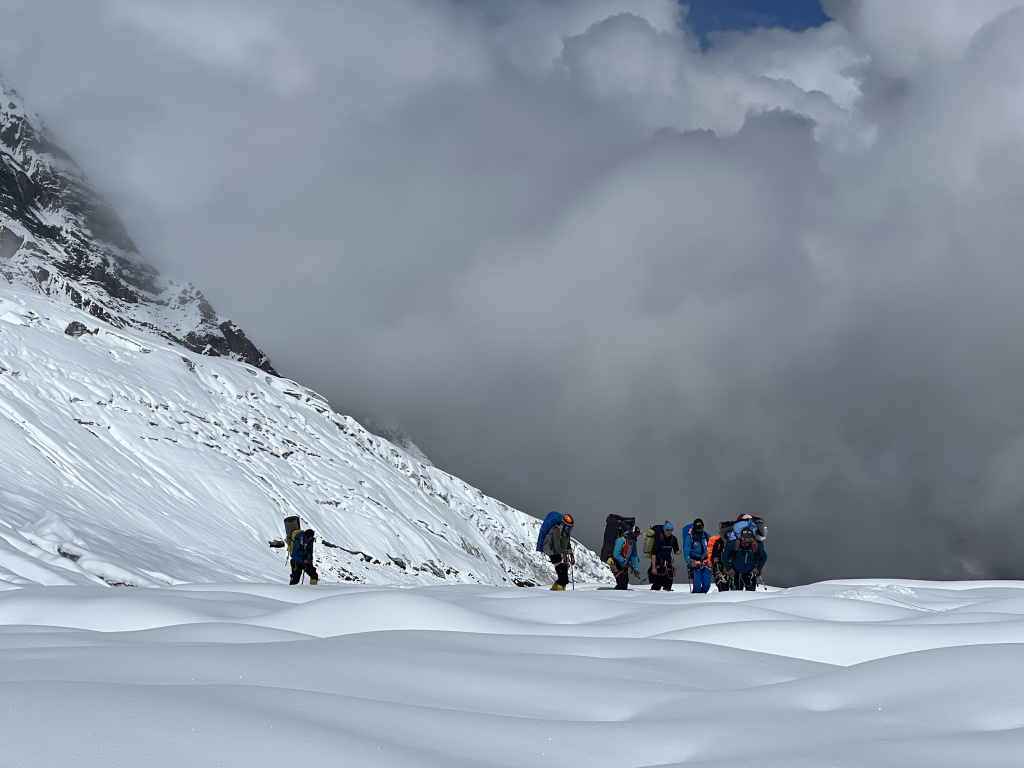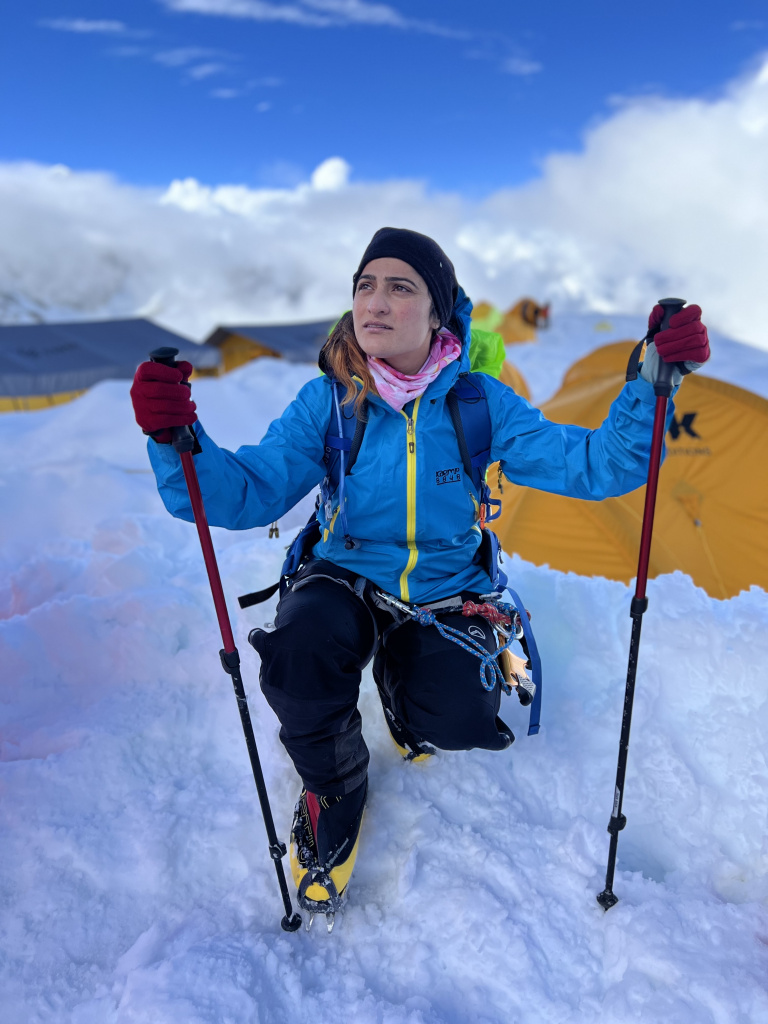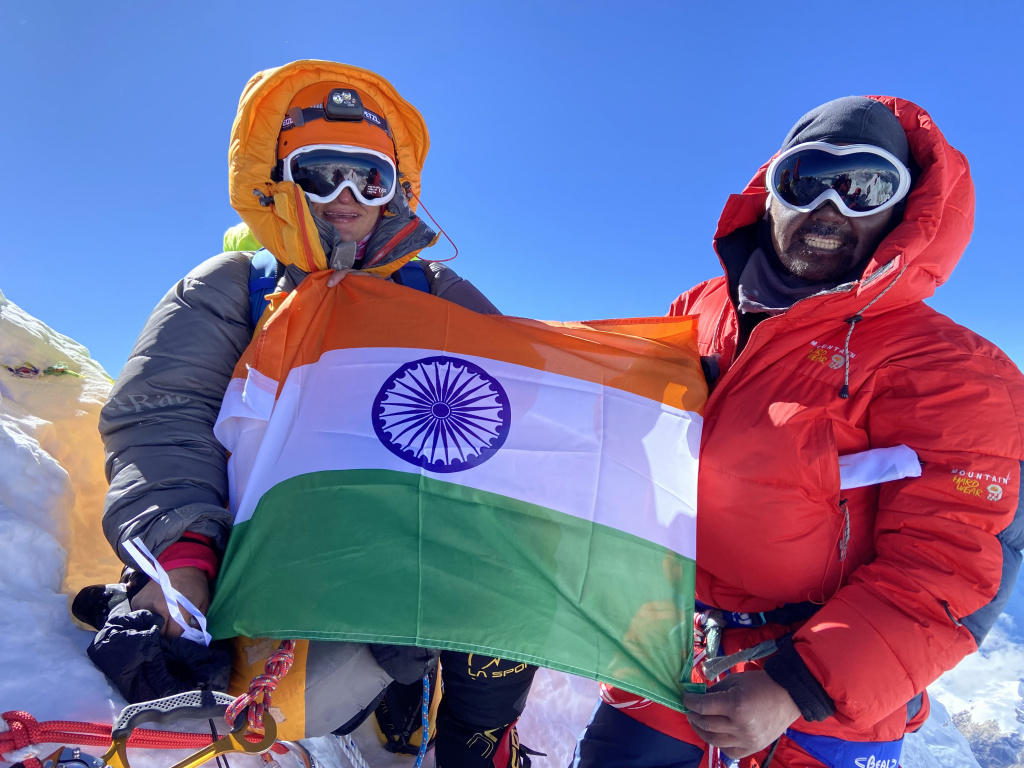The Indian mountaineer held her nerve to pull off a climb up the 8th highest mountain of the world during a season hampered by bad weather and avalanches.

Climbing without oxygen was hard enough. Then an avalanche buried everything in its path
At 7.40 am on September 30, mountaineer Baljeet Kaur stood on the summit of Manaslu – the first Indian woman to get there without oxygen.
On September 26, 2022, Baljeet Kaur and her climbing partner, Mingma Sherpa, started ascending from Camp 3 (6,800m) on Manaslu. Two days earlier, they had left base camp, with eyes on the summit (8,163m) of the eighth highest mountain in the world.
At around 7,000 metres, Baljeet stopped for a drink. Her decision to climb without supplementary oxygen, besides the strong winds and heavy snow dumps, had made things more challenging on the upper slopes. She shared the last of her lukewarm water with Mingma and five minutes later, continued her progress towards Camp 4.
In the next moment, a loud cracking sound had her attention. She looked up to see the entire snow slope above her hurtling towards them.
“Mingma dai – avalanche!” she cried out.
Mingma knew what had to be done. He threw his bag, unfastened himself from the fixed ropes and darted off to get out of the avalanche’s path. Baljeet, however, stood there in a daze.

“I was really confused about what I needed to do. If I had unclipped from my anchor, I was certain the wind would have carried me away,” Baljeet recalls.
The instructions from her mountaineering courses came back to her. Though frozen at the same spot, she sat down, made a little pocket of air with her hands to help her breathe, in case she got buried under the snow, and braced for impact.
***
In April this year, Baljeet set out on her most ambitious project yet. Her intent was to climb some of the highest 8,000 metre mountains of the world, but there was uncertainty every step of the way. While her training had been spot-on and she was confident of her abilities, the funding had been hard to come by.
Back in October 2021, she had moved out of her home near Solan in Himachal Pradesh and shifted to a rented space in Gurugram. The idea was to be closer to the sponsors, so that she could meet them when required. For her first mountain, Annapurna I, she had to reach into her savings to buy the permit. And just weeks before leaving for Nepal, she had gathered enough money for Everest.
While on the mountain, all her energies were focused on the climb. The moment she was off it, she would be making hopeful calls to potential sponsors. A lot of the funds were arranged on the fly. But in a month’s time, Baljeet managed to pull off some of the most testing climbs up five 8,000ers – Annapurna I, Kangchenjunga, Everest, Lhotse and Makalu.
“I had to borrow money for those climbs and still owe some people. It’s just a good thing that I haven’t had to take any loans so far. If I wanted to climb, I had to take some risks,” Baljeet says.
By the end of May, she had summited six 8,000 metre mountains since her first, Dhaulagiri, in October 2020. If things worked out, Baljeet longed to pull off a few more.

***
The ordeal of raising funds was no different this time around. Once again, Baljeet moved out of her home, this time to Mumbai, in search of sponsors. If she managed to arrange the money, there was a bigger target in her head.
Purists believe mountaineering in its true form is practiced without the use of supplementary oxygen. It was something Baljeet had considered, ever since her first attempt on Everest in 2016, when she had turned back from 8,400 metres.
“I’ve always wanted to test myself and feel the altitude over 8,000 metres, what they call the Death Zone. I thought of it during the climbs earlier this year as well, but things didn’t work out then,” she says.
For an oxygen-less climb up Manaslu, Baljeet was clear she would have to train harder. To work on her endurance, she ran 10km in the morning and 10-15km in the evening. She would mix it up with cycling sessions, besides strength and core workouts. As part of her final preparations, she climbed Nun, a 7,135 metre mountain near Kargil, in August.
Two months before her expedition, Baljeet also worked on nutrition to pack in the calories for the attempt without oxygen. She added dry fruits to her vegetarian meals and also started on protein shakes which she would otherwise avoid.
“The funny part is that fundraising was still the most difficult part, in spite of what I had achieved just months earlier. People still don’t know this sport,” she says.
As always, she managed to put together the money at the last minute and arrived in Kathmandu on September 8.
***
Among the 8,000ers in Nepal, Manaslu is considered to be an easier mountain to climb as compared to the rest. As a result, a lot of mountaineers choose this as their first 8,000 metre mountain.
Last year, a study conducted by researcher Eberhard Jurgalski and his team had discovered that a lot of climbers in previous years had only managed to reach the false summit of Manaslu – a horizontal distance of about 20 metres from the true summit and about 3-6 metres lower. This brought a lot of climbers back, who now hoped to get to the true summit this year.
Alongside the first-timers, it added to the crowding on the mountain. By September 30, the Department of Tourism had issued 404 permits for Manaslu; in comparison, there were under 200 permits last season.
“It was only after I had applied for my permit that I learned that there were going to be so many climbers on Manaslu. I was worried, but had already made up my mind,” Baljeet says.

Bad weather battered the climbers through most of the week. It played on her mind, more so, because of the lack of oxygen for her attempt.
“It was windy all the time. There were climbers on oxygen who were unable to make progress. I spoke to those who had gone on the mountain before me and picked up tips. They told me that without oxygen, the limbs get really cold and you tend to get sleepy. They suggested I consume small calories at regular intervals,” she says.
After two acclimatisation rotations on the mountain, Baljeet had felt confident. Little did she know that the mountain would test her time and again.
***
It was over in a flash. Baljeet says a hanging glacier near Camp 4 had dislodged and came crashing down, causing the avalanche. Luckily, it had missed her, save some minor impact to her back and head. When she opened her eyes and stood up, she realised that the entire mountain above her had slid past her. She heard voices screaming for help, yet others who were sobbing.
Mingma rushed to her side to check on her. Once they both realised they were unharmed, they got down to helping others.
“Some 300 metres below me, I saw somebody’s hand sticking out of the snow. So we quickly descended and pulled him out. While Mingma dai checked on him, I saw a crampon lying nearby. I reached out for it and realised there was someone buried there,” she recalls.
Baljeet called out for help and together with other climbers, pulled the person out. They tried to revive him, but he had passed away by then.
“That moment hit me hard when I realised that this person had died moments ago,” she says.
Baljeet and Mingma descended to Camp 3. That night, she found it difficult to put her mind to rest. She had seen avalanches before, but this one had destroyed everything in its path. She thought of the dead climber in her arms and his family. She shivered and another climber held her hand all night to calm her nerves.
“I drifted in and out of consciousness, unsure whether all of it was a dream or for real,” Baljeet recalls.
A decision was due the following morning. The route had been reopened and Mingma checked if Baljeet still wanted to climb.
“Mingma dai was unsure of how the incident had affected me. But one of the things that you learn early on is how dangerous mountaineering can be. You just have to accept it. I thought that if I had been handed the opportunity, I should continue climbing. Perhaps, it was in my kismet,” Baljeet says.
That evening, the duo set off at 7pm and were at the summit camp by 11.30pm. They had experienced strong winds all throughout, which had blown away most tents. They crouched into one that was still standing alongside other climbers, sitting up all night at the entrance.
The freeze and exhaustion were catching up with Baljeet. There was also the risk of frostbites to her extremities. In that moment, it was clear that they wouldn’t be attempting the summit that night.
“The weather wasn’t conducive and my body had weakened considerably. I had no energy to continue and we descended to Camp 3 in the morning,” she says.
***
As she rested in camp, Baljeet realised that she had one last chance to attempt the summit. She had spent nine days above Camp 3 and it had taken a toll on her body.
When they set out at 5pm that evening, the weather hadn’t improved. Given the conditions, there were few climbers on the route. They heated some water at Camp 4 and after a brief rest, continued making gradual progress. Bad weather was predicted post-midnight, but luckily for them, it held up.
At 7am, Baljeet reached the false summit of Manaslu. She felt positive, in spite of the hectic last few days. After catching her breath and sipping water, she started out again.

At 7.40 am on September 30, she stood on the summit of Manaslu – the first Indian woman to get there without oxygen.
“Honestly, I felt really strong, as if I had climbed a 7,000 metre mountain. The summit excitement had taken over, but at the same time, I knew I had been really lucky to get there,” she says.